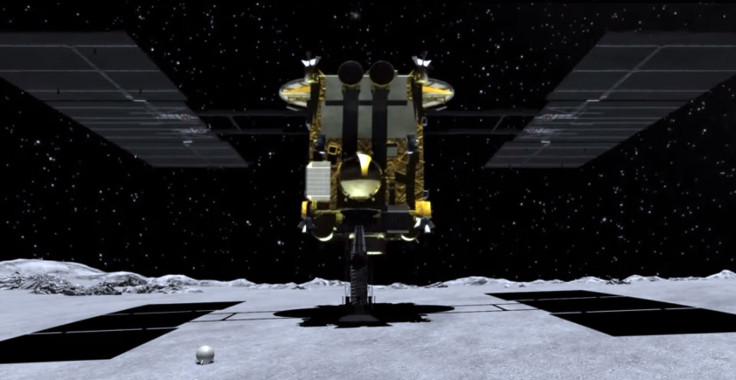Hayabusa 2: Japan's New Asteroid Mining Plans Could Hold Answer to Life on Earth

The Japan Aerospace Exploration Agency (JAXA) is planning to launch a new probe into space to mine the asteroid 1999 JU3. This is the second attempt at mining an asteroid after the last spacecraft, Hayabusa, failed in its core mission.
The new spacecraft, named Hayabusa 2, has been completed and is ready and waiting to ship to its launch site.
It is hoped that Hayabusa 2 will return to earth in 2020, just in time for the Tokyo 2020 Olympic Games.
In December, JAXA plans to shoot Hayabusa 2 into space from the Tanegashima Space Centre and send it on a four year journey to the kilometre-wide asteroid, 1999 JU3. Once it has reached its destination, probes will be launched to collect asteroid samples.
When it arrives at 1999 JU3, Hayabusa 2 will put down a European-built lander named MASCOT, and three 'hopping' rovers called MINERVA-II. It will then fire a space-cannon into the surface to generate a large crater for samples to be collected.
The turbulent journey of Hayabusa
Four years ago, the original Hayabusa spacecraft returned to earth after a chaotic seven-year mission to the asteroid Itokawa. After many malfunctions, navigational issues, thruster leaks, communication problems and one of the robots set to explore the surface drifting off into space, the spacecraft finally made it home in 2010 with a small sample of dust to be analysed.
Even though the probe bought back a good sample of silicon and iron-rich dust, its real mission was to mine the asteroid and bring back samples from inside the rock. The probe bounced off the surface several times and failed to mine, so no substantial samples were taken.
Itokawa is a rock-rich 'S-type' asteroid meaning it is of a stony composition, but the new mission will focus on the 1999 JU3, which is a carbonaceous 'C-type' asteroid.
This type of asteroid is also made of rock but contains a higher level of organic elements inside it, such as water.
Scientists are particularly excited as the organic matter inside 1999 JU3 could help identify how life on earth began.
One theory, as outlined in New Scientist, is that amino acids first arrived on earth inside asteroids that flew into our planet's surface. The only way to prove this explanation is to find amino acids in space rocks.
Improvements made to Hayabusa 2
New features have been added to Hayabusa 2, to try and ensure the problems that plagued its predecessor are less likely to occur.
One of these additions is a 30cm-wide explosive device called an impactor, which will be shot into the surface of the asteroid as the spacecraft moves to safety behind it.
Once the impactor explodes, a one-metre crater will be made, enabling samples less affected by solar radiation to be taken from below the surface.
Hayabusa 2 will have two methods of collecting the samples, so that if one fails as in the first mission, there should be samples from the other.
The first method, same as the one used in Hayabusa, will be to fire a pellet into the surface of the asteroid to throw dust into the air for collection.
The second and new method will be to drive a sticky, silicone-based substance into the crater to collect additional dust.
If all goes to plan, the samples will be returned to earth and scientists will have more answers about the origins of the universe.
© Copyright IBTimes 2024. All rights reserved.





